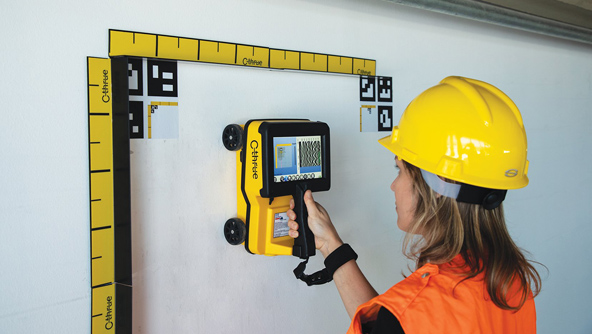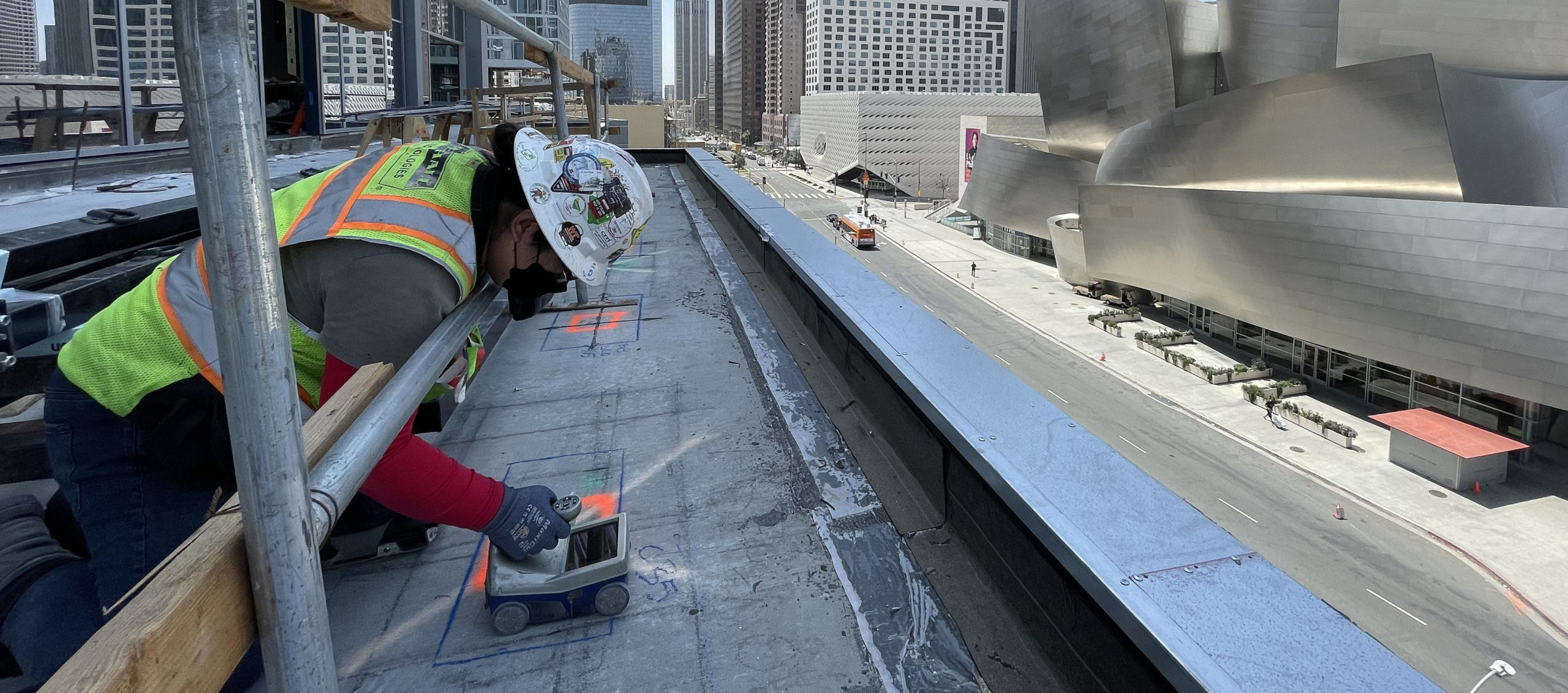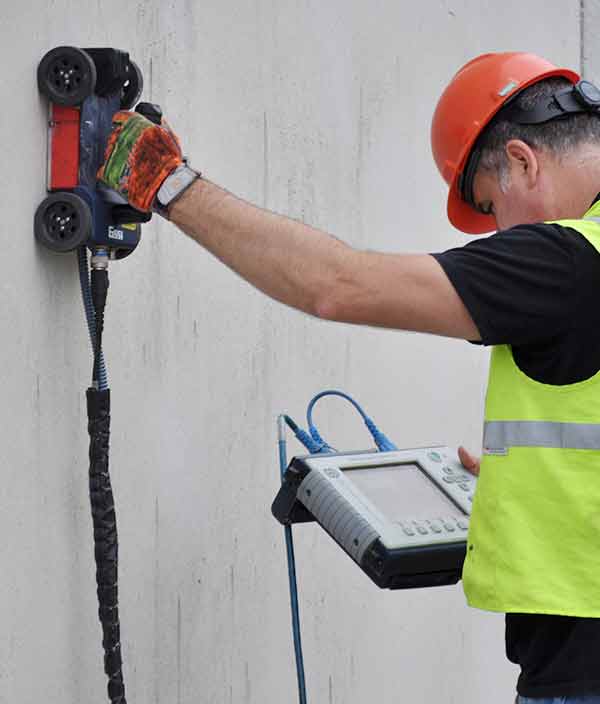Concrete Scanning: Your Guard Against Unforeseen Obstacles in Construction Projects
In the world of building and construction, unforeseen difficulties can often interfere with timelines, spending plans, and safety and security protocols. However, with the development of concrete scanning modern technologies, the capacity to prepare for and reduce prospective challenges has actually become a crucial aspect of project planning and execution. By taking advantage of the power of sophisticated scanning approaches, construction specialists can proactively determine concealed dangers under the surface area, making certain a smoother and more efficient project delivery. As we explore the significance of concrete scanning as a protective guard versus unpredicted barriers in building and construction tasks, a much deeper understanding of its applications and benefits emerges, clarifying the transformative influence it can carry the market all at once.
Significance of Concrete Scanning
Concrete scanning plays an essential duty in guaranteeing the safety and stability of construction jobs. By utilizing advanced technologies such as ground-penetrating radar (GPR) and electro-magnetic induction, construction teams can accurately locate rebar, post-tension cables, channels, and other potential obstructions within concrete structures. This process is essential for protecting against costly problems, guaranteeing architectural stability, and preserving task timelines.
One of the key reasons that concrete scanning is so vital is its ability to minimize risks during the building and construction phase. By determining covert threats beneath the surface, such as spaces or shabby locations within the concrete, specialists can proactively resolve these issues prior to they intensify right into even more significant issues. This positive strategy not only improves employee safety but also lessens the possibility of building hold-ups and spending plan overruns.
Moreover, concrete scanning enables building groups to make informed decisions based on precise data. By having a clear understanding of the subsurface conditions, job supervisors can intend excavation, exploration, or reducing tasks more efficiently, minimizing the capacity for unexpected damage to important architectural components. Inevitably, purchasing concrete scanning solutions is a positive action that can conserve building business time, money, and credibility over time.
Advanced Technologies for Detection

An additional cutting-edge technology is Electromagnetic Induction (EMI), which spots metallic and non-metallic objects underground by inducing electromagnetic fields. EMI is particularly useful for locating hidden energies like pipelines and wires - GPR Concrete Scanning Bellevue. Furthermore, Acoustic Pulse Mirror (APE) innovation uses sound waves to examine the read this post here condition of concrete structures and spot voids, delaminations, or cracks. APE provides real-time information, allowing instant decision-making on repair work or reinforcement demands.
Moreover, developments in infrared thermography have allowed the discovery of moisture infiltration and insulation gaps within concrete frameworks. This innovation aids in protecting against future degeneration and guaranteeing the long life of constructions. By including these advanced innovations into concrete scanning methods, building and construction jobs can minimize risks and boost overall job outcomes.
Advantages of Proactive Scanning
Carrying out aggressive scanning methods in building and construction tasks boosts the very early detection of potential subsurface obstacles, leading to improved task performance and price financial savings. By utilizing concrete scanning technologies such as ground-penetrating radar (GPR) and electromagnetic induction, construction groups can recognize concealed risks before they rise right into expensive concerns.
By identifying prospective obstacles early on, building staffs can take preventive procedures to mitigate dangers and make certain a safer working atmosphere for all included. Overall, the aggressive method to concrete scanning not just conserves time and money but additionally boosts the overall high quality and success of building tasks.

Enhancing Job Performance
To optimize construction job results, the aggressive scanning methods utilized not just enhance security however likewise play a vital duty in boosting overall project efficiency. By conducting complete concrete scanning before commencing any type of building tasks, prospective challenges and dangers underneath the surface can be determined and minimized early on. This aggressive approach minimizes the likelihood of pricey hold-ups, rework, and crashes, hence simplifying the task timeline and spending plan.
By preemptively attending to any underground intricacies, the building process can continue efficiently, with fewer disturbances and unpredicted difficulties. Ultimately, the assimilation of concrete scanning right into building and construction jobs not only guarantees useful source security and conformity however likewise enhances productivity and job performance.
Ensuring Security On-Site
Safety and security on building websites is extremely important to the success of any project. Making sure safety and security on-site calls for an extensive technique that entails aggressive measures to avoid crashes and minimize threats. One of the key aspects of promoting security is supplying appropriate training to all personnel associated with the job. Training ought to cover appropriate handling of devices, adherence to security procedures, and emergency situation treatments. Normal safety and security examinations and audits need to also be conducted to identify possible threats and visit site resolve them promptly.
Carrying out clear interaction networks for reporting security problems is crucial for creating a safe workplace. Urging a safety-first culture where workers really feel equipped to speak out concerning prospective risks can assist prevent accidents before they occur. In addition, supplying personal safety devices (PPE) and imposing its usage is essential in safeguarding employees from harm.
Verdict

By integrating these sophisticated innovations into concrete scanning practices, building and construction projects can mitigate risks and boost total job results.

In final thought, concrete scanning plays a critical duty in building jobs by identifying unforeseen obstacles that could potentially hinder development and compromise security on-site. GPR Concrete Scanning Bellevue.